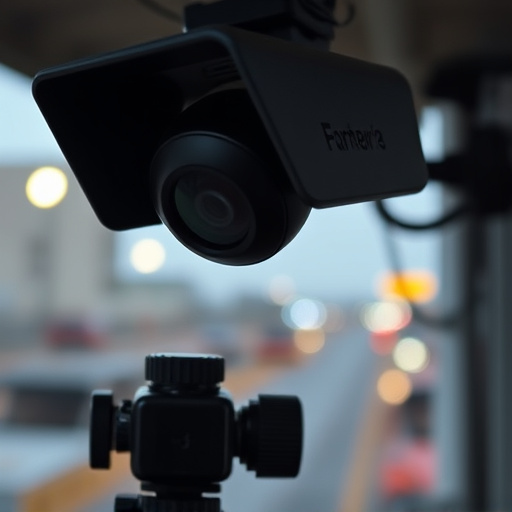Strategic placement of indoor hidden security cameras is crucial for comprehensive building security. Legal and ethical considerations, including consent requirements and privacy rights, must be understood. High-risk areas like entry points, valuable asset locations, and staff movement zones are key targets. Discreet mounting techniques, such as within ceiling tiles or wall panels, ensure covertness while maximising field of view. Regular maintenance, including inspections and testing, is vital for reliable performance. Proper signage complies with laws and alerts individuals to surveillance, fostering trust while enhancing security.
“Uncovering the intricacies of indoor hidden security camera placement requires a balance between effective surveillance and respecting privacy. This comprehensive guide delves into the best practices for installing a covert camera network, addressing legal and ethical considerations first and foremost. We explore strategic high-risk area identification, discreet mounting techniques, and system optimization through regular maintenance. By mastering these practices, you’ll ensure optimal coverage while minimizing blind spots, fostering a secure environment.”
- Understanding Legal and Ethical Considerations for Hidden Camera Installation
- Identifying High-Risk Areas for Indoor Security Camera Placement
- Best Practices for Discreet Camera Mounting and Positioning
- Ensuring Effective Coverage and Minimizing Blind Spots
- Regular Maintenance and System Checks for Optimal Performance
Understanding Legal and Ethical Considerations for Hidden Camera Installation
When considering indoor hidden security camera placement, it’s crucial to grasp the legal and ethical boundaries surrounding the practice. Different jurisdictions have distinct laws regarding surveillance, with some explicitly prohibiting hidden cameras unless there’s a legitimate security or privacy concern. For instance, many regions demand explicit consent from all parties involved, especially in residential spaces.
Ethically, the use of hidden cameras should be a last resort, only employed when necessary for safeguarding sensitive areas. It’s essential to respect people’s right to privacy and ensure that camera placement doesn’t invade personal spaces or create an atmosphere of mistrust. Proper signage indicating surveillance is a best practice, allowing individuals to be aware of their surroundings while adhering to legal requirements.
Identifying High-Risk Areas for Indoor Security Camera Placement
When planning indoor hidden security camera placement, it’s crucial to identify high-risk areas that require the most vigilance. These spots often include entry and exit points, like doors and windows, as well as valuable asset locations, such as offices, safes, and data centers. Understanding the flow of people and potential vulnerabilities is key; for instance, areas with frequent staff movements or access to sensitive information warrant enhanced surveillance.
Focusing on these high-risk zones ensures that your indoor hidden security camera network provides comprehensive coverage, deterring potential intruders and facilitating swift response in case of any unauthorized activities. This strategic placement also allows for better data analysis, as you can track and analyze the movement of individuals within these areas, enhancing overall building security.
Best Practices for Discreet Camera Mounting and Positioning
When considering indoor hidden security camera placement, discretion is key. Best practices for mounting and positioning cameras involve strategically selecting locations that offer optimal visibility while remaining invisible to potential intruders. This often means integrating cameras into existing infrastructure like ceiling tiles or wall panels, ensuring they are flush with the surface and not easily detectable. Additionally, placing them in corners or along perimeters can maximize field of view without drawing attention.
Avoiding direct lines of sight from entry points, such as doors and windows, is crucial for maintaining covert surveillance. Cameras should be positioned to capture areas of interest without being obvious. Using reflective surfaces or angled mounting can help bounce footage towards the camera while keeping it out of view. Regularly reviewing floor plans and simulating potential scenarios aids in identifying ideal indoor hidden security camera placement for comprehensive coverage without compromising privacy or security.
Ensuring Effective Coverage and Minimizing Blind Spots
To ensure effective coverage, strategically place hidden security cameras in indoor spaces. Focus on high-risk areas like entry points, corridors, and common areas where potential intruders might go unnoticed. Overlapping fields of view between cameras helps eliminate blind spots, creating a continuous surveillance network. This allows for comprehensive monitoring and rapid response to any suspicious activities.
When installing indoor hidden security cameras, consider the environment’s unique characteristics. For instance, in large facilities, cameras should be positioned to capture key intersections and areas where walls or fixtures might block line-of-sight. Regularly reviewing footage and adjusting camera placements can further optimize coverage, ensuring that every nook and cranny is monitored for potential security breaches.
Regular Maintenance and System Checks for Optimal Performance
Regular maintenance and system checks are paramount for ensuring optimal performance of a covert camera network. It’s crucial to perform routine inspections, testing cameras’ functionality, connectivity, and image quality. This includes checking power supplies, cables, and connectors for any signs of damage or loose connections. By doing so, you can identify and address potential issues before they disrupt surveillance capabilities.
For indoor hidden security camera placement, regular maintenance takes on added importance. Since these cameras are designed to remain undetected, their longevity and functionality become even more critical. A well-maintained system ensures that your hidden cameras continue to provide reliable and discreet monitoring, deterring potential intruders without compromising the integrity of the installation.
When implementing an indoor hidden security camera network, adhering to best practices ensures optimal coverage while respecting privacy. By understanding legal boundaries, strategically identifying high-risk areas, and employing discreet mounting techniques, you can create a robust surveillance system. Regular maintenance and thorough checks are vital to guarantee the system functions efficiently, ensuring peace of mind and enhanced indoor security. These practices promote a balanced approach to hidden camera installation, merging effective monitoring with ethical responsibility.
